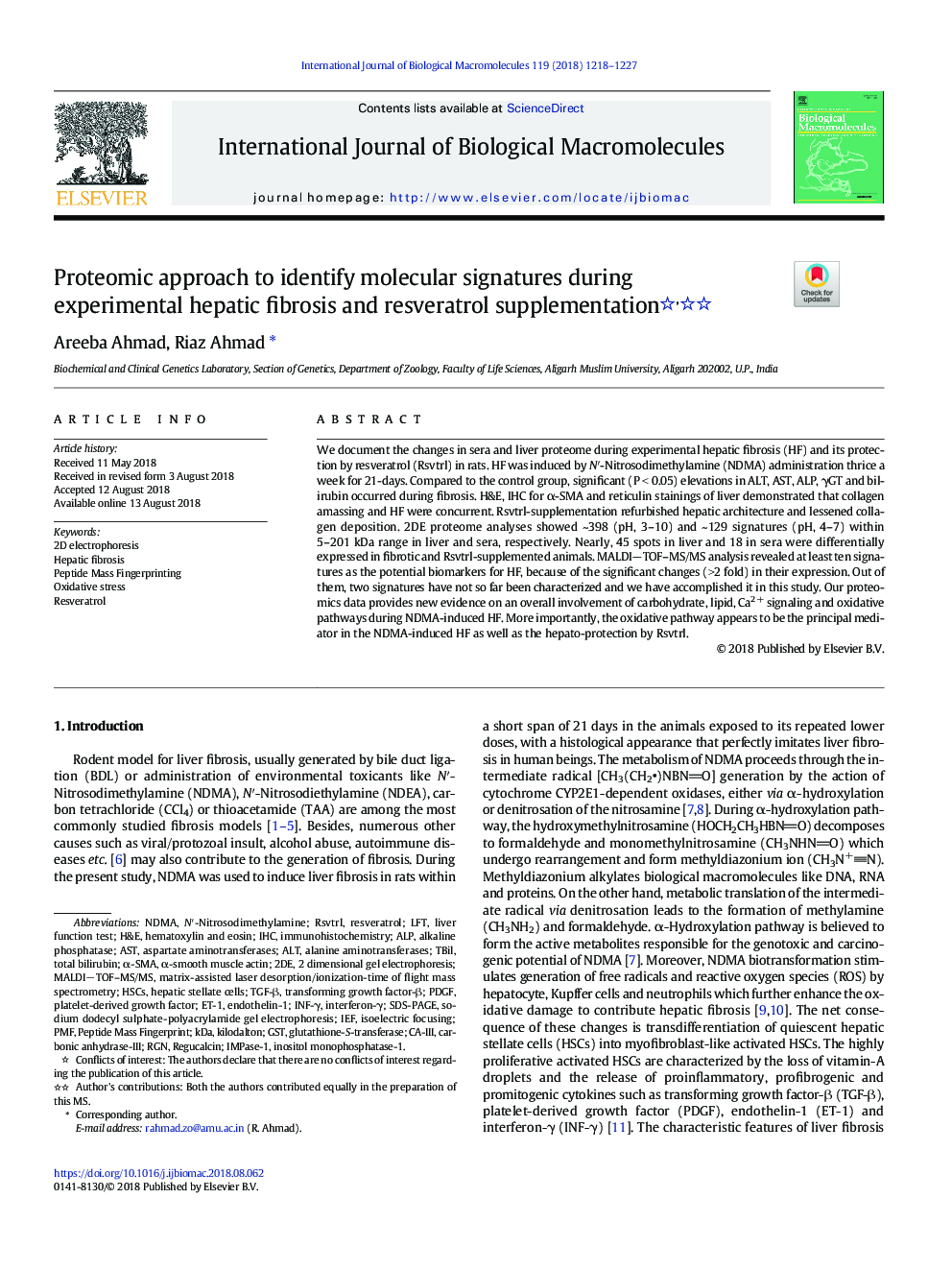| Article ID | Journal | Published Year | Pages | File Type |
|---|---|---|---|---|
| 8326620 | International Journal of Biological Macromolecules | 2018 | 10 Pages |
Abstract
We document the changes in sera and liver proteome during experimental hepatic fibrosis (HF) and its protection by resveratrol (Rsvtrl) in rats. HF was induced by Nâ²-Nitrosodimethylamine (NDMA) administration thrice a week for 21-days. Compared to the control group, significant (Pâ¯<â¯0.05) elevations in ALT, AST, ALP, γGT and bilirubin occurred during fibrosis. H&E, IHC for α-SMA and reticulin stainings of liver demonstrated that collagen amassing and HF were concurrent. Rsvtrl-supplementation refurbished hepatic architecture and lessened collagen deposition. 2DE proteome analyses showed ~398 (pH, 3-10) and ~129 signatures (pH, 4-7) within 5-201â¯kDa range in liver and sera, respectively. Nearly, 45 spots in liver and 18 in sera were differentially expressed in fibrotic and Rsvtrl-supplemented animals. MALDIâTOF-MS/MS analysis revealed at least ten signatures as the potential biomarkers for HF, because of the significant changes (>2 fold) in their expression. Out of them, two signatures have not so far been characterized and we have accomplished it in this study. Our proteomics data provides new evidence on an overall involvement of carbohydrate, lipid, Ca2+ signaling and oxidative pathways during NDMA-induced HF. More importantly, the oxidative pathway appears to be the principal mediator in the NDMA-induced HF as well as the hepato-protection by Rsvtrl.
Keywords
α-SMATBILHSCsLFTINF-γPDGFET-1IEFALTRegucalcinPMFkiloDaltonkDaGSTTGF-βRGN2 Dimensional gel electrophoresisnDMA2DEH&ELiver function testaspartate aminotransferasesASTalanine aminotransferasesALPAlkaline phosphatasePeptide mass fingerprintPeptide mass fingerprinting2D electrophoresissodium dodecyl sulphate-polyacrylamide gel electrophoresisSDS-PAGEendothelin-1α-smooth muscle actinImmunohistochemistryIHCinterferon-γtransforming growth factor-βisoelectric focusingOxidative stressResveratrolHepatic stellate cellsMatrix-assisted laser desorption/ionization-time of flight mass spectrometryplatelet-derived growth factorHepatic fibrosisHematoxylin and Eosintotal bilirubinglutathione-S-transferase
Related Topics
Life Sciences
Biochemistry, Genetics and Molecular Biology
Biochemistry
Authors
Areeba Ahmad, Riaz Ahmad,
